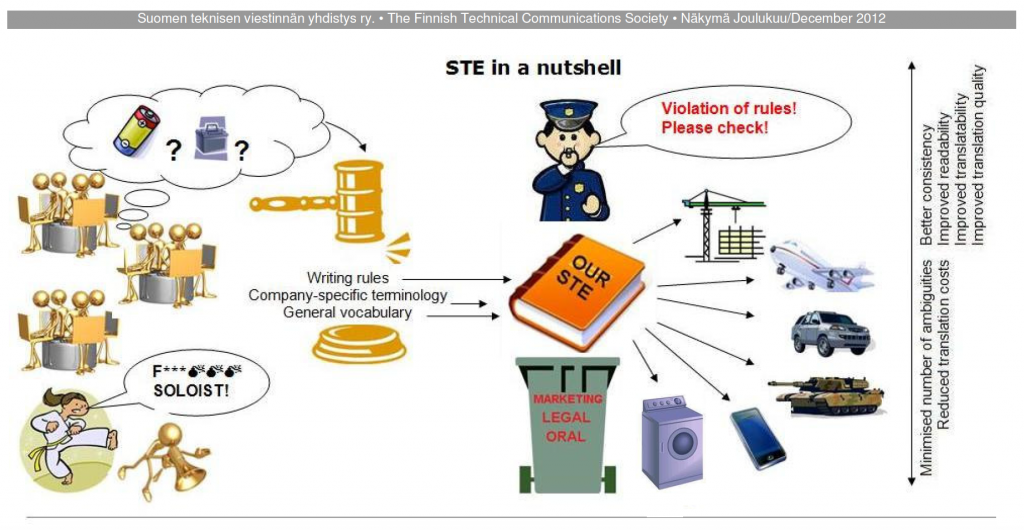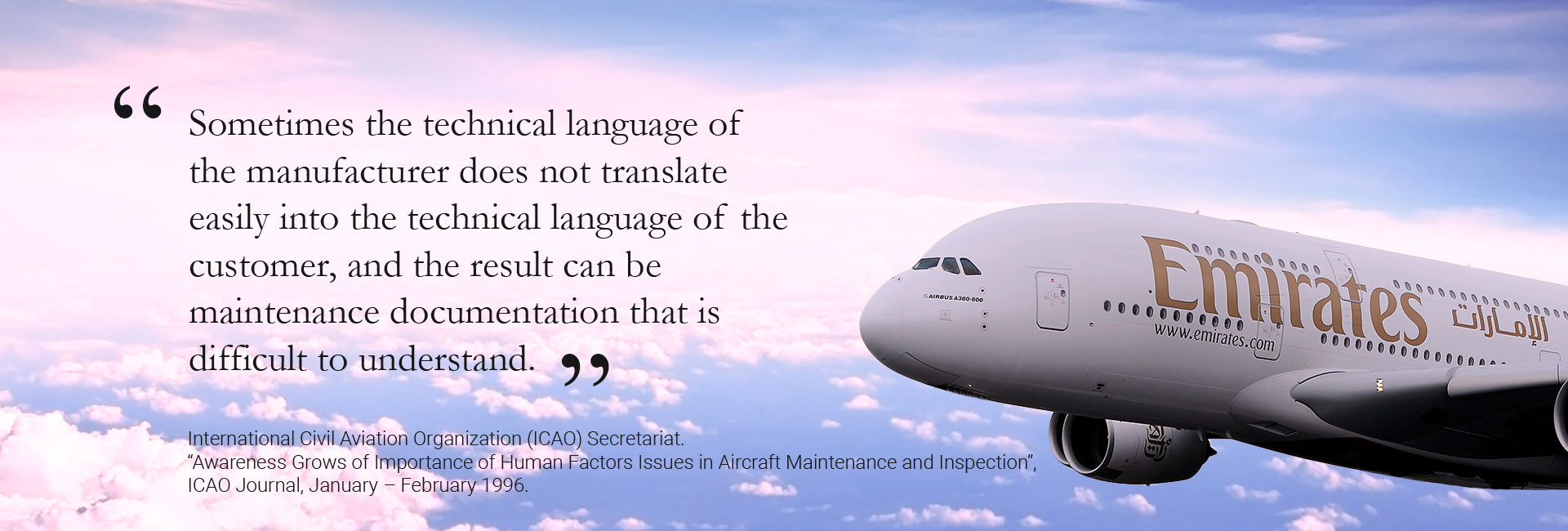Quick facts
Dates: 27 – 28 October 2016Location: Tampere, Finland
Length of training: 2 days
Early bird registration: Before 7 October 2016
Sign up early to enjoy a 20% training discount
Deadline for registration: 20 October 2016
Summary
ASD-STE100 Simplified Technical English (STE) is a controlled language that is used to write technical manuals in such a way that they can be more easily understood by an international audience. STE helps to make translations cheaper and more accurate. Often a formal requirement for aircraft and defence maintenance documentation, STE can easily be adapted to all technical industries and beyond. Ms. Shumin Chen will teach participants how to correctly and effectively use STE in practice. She will also address some of the mistakes commonly found in technical writing and the frequently incorrect use of common STE writing rules.
STE is a ‘way of life’ in the field of technical writing and documentation. The ASD-STE100 exercises covered a wide spectrum of topics from choosing between approved and non-approved words to recreating documentation in STE. Shumin expertly guides us from classroom learning mode to real-life practical application of STE rules. The materials that she presented were informative and very convincing.” Martin Broekhuis, Technical Editor, Webasto.
Course outline*
- Practical overview of ASD-STE100 Simplified Technical English
- How STE helps both native & non-native speakers of English
- Writing rules and how to apply them in practice
- How to use the general vocabulary
- How to deal with industry-specific terminology
- How to use STE for various documentation types
- How to implement STE with minimal disruption to on-going production and existing documentation
- Hands-on STE editing and review
* Shufrans also offers customised ASD-STE100 training solutions tailored to meet your specific requirements. These courses are normally provided at the customer’s premises.
Who should attend?
- Compliance managers
- CIO, COO, CTO
- Customer support managers
- Documentation managers
- Editors
- Engineering managers
- Engineers and SMEs who create documentation
- ILS managers
- Maintenance managers
- Operation managers
- Product managers
- Project managers
- Quality managers
- Technical writers
- Translation managers
- Translators
What training outcomes to expect?
Our interactive training, exercises and workshop, will teach participants to standardise content to:
- Author more efficiently
- Communicate more effectively with a global audience
- Improve operational safety
- Reduce AOG / downtime
- Facilitate modular writing and reuse
- Facilitate teamwork
- Facilitate translation
- Maximise consistency
- Optimise product lifecycle support
- Reduce the cost of creating and maintaining technical publications
Trainer’s qualifications
Ms. Shumin Chen, principal trainer & consultant at Shufrans TechDocs received her professional on-the-job training in the field of STE under the tutelage of Dr Frans Wijma, a linguist and documentation expert. Together as an experienced global team, they provided their combined knowledge and dedication to benefit customers worldwide. To date, they have provided training and consultancy services to over 180 companies. Shufrans TechDocs is the only company with such vast experience in providing certified STE training.
Shumin has supported various companies with their STE and other documentation needs, based on standards where possible. Although STE was developed for the aerospace industry, more specifically for aircraft maintenance documentation, Shumin found that it made a lot of sense to apply the same principles to other industries and types of documents as well. Few -if any- changes to the specification are necessary to adapt STE to industries ranging from machinery to IT, automotive to medical equipment.
This training workshop is hosted by Citec Finland, our preferred training partner in Finland.






